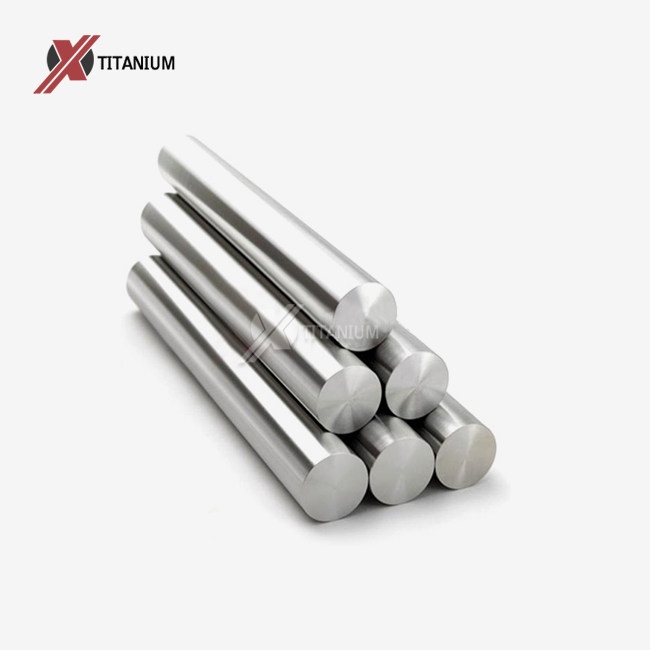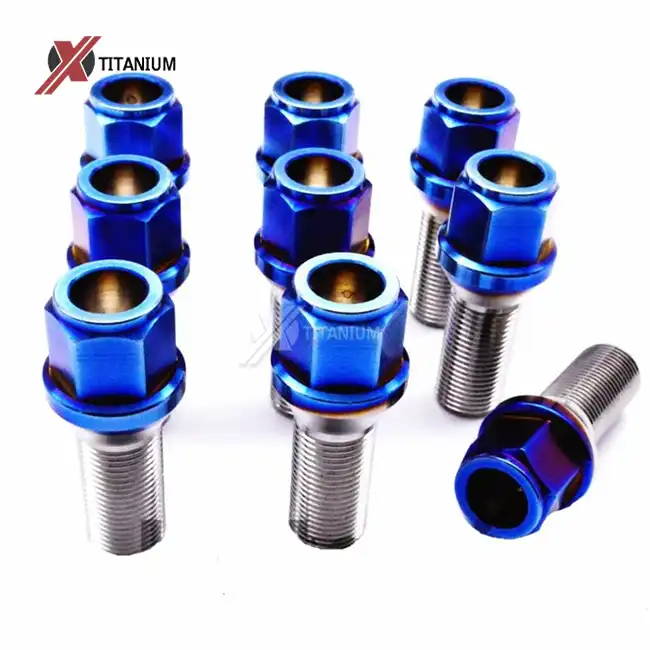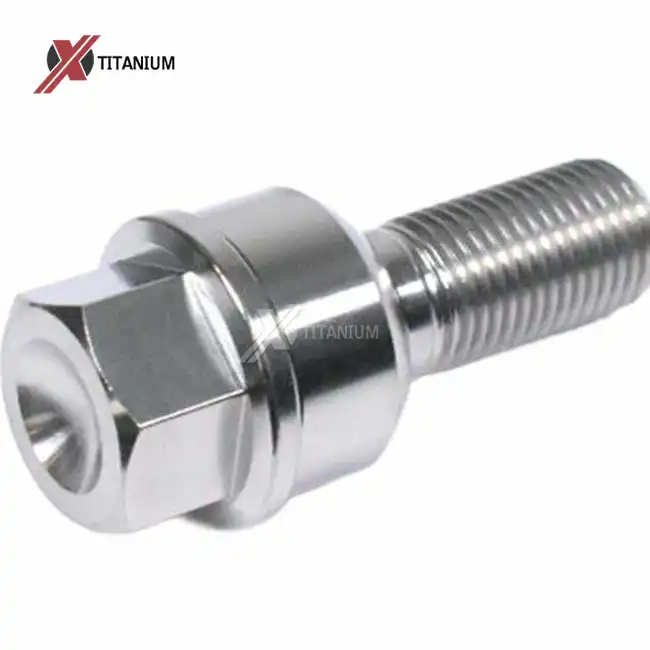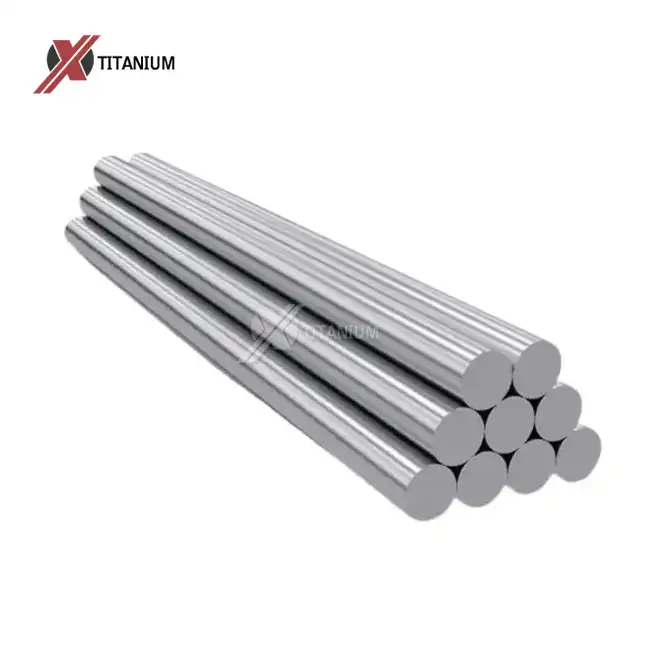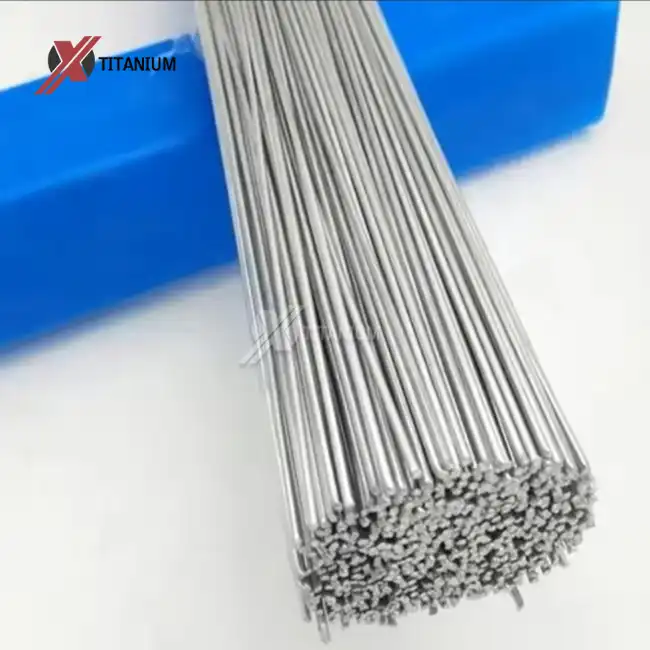Comprehending Titanium Rods and Their Interaction with MRI Technology
The Composition and Properties of Titanium Rods
Titanium rods are widely used in medical implants due to their exceptional properties. These rods are typically made from either commercially pure titanium or titanium alloys, such as Ti-6Al-4V. The composition of these rods contributes to their remarkable strength-to-weight ratio, biocompatibility, and corrosion resistance. Titanium's atomic structure gives it a unique combination of lightness and durability, making it an ideal choice for various medical applications, including orthopedic implants and dental prosthetics.
One of the most significant advantages of titanium rods is their non-ferromagnetic nature. Unlike ferromagnetic materials such as iron or nickel, titanium does not become strongly magnetized in the presence of an external magnetic field. This property is crucial when considering the interaction between titanium implants and MRI machines, as it significantly reduces the risk of implant movement or heating during scans.
The Basics of MRI Technology and Its Interaction with Metals
Magnetic Resonance Imaging (MRI) is a powerful diagnostic tool that uses strong magnetic fields and radio waves to generate detailed images of the body's internal structures. The technology relies on the behavior of hydrogen atoms in the body when exposed to these magnetic fields and radio frequency pulses. By detecting the energy released by these atoms as they return to their normal state, MRI machines can create high-resolution images of tissues and organs.
When it comes to metals in the body, MRI technology can face challenges. Ferromagnetic materials can cause significant distortions in the magnetic field, leading to image artifacts or even safety concerns. However, non-ferromagnetic metals like titanium interact differently with MRI fields. While they don't pose the same safety risks as ferromagnetic materials, they can still influence the local magnetic field, potentially affecting image quality in the immediate vicinity of the implant.
The Impact of Titanium Rods on MRI Image Quality
Types of Artifacts Caused by Titanium Implants
Despite titanium's MRI-compatible nature, titanium rods can still generate certain types of artifacts in MRI images. These artifacts are primarily due to the differences in magnetic susceptibility between titanium and the surrounding tissues. The main types of artifacts associated with titanium implants include:
- Susceptibility artifacts: These appear as areas of signal loss or distortion around the implant due to local magnetic field inhomogeneities.
- Geometric distortion: This occurs when the presence of the titanium rod causes slight shifts in the position of surrounding tissues in the image.
- Chemical shift artifacts: These can result in bright or dark bands adjacent to the implant, caused by differences in resonance frequencies between fat and water molecules in the presence of the altered local magnetic field.
The severity of these artifacts can vary depending on the specific properties of the titanium rods, including their size, shape, and exact composition. Additionally, the orientation of the rods relative to the main magnetic field of the MRI machine can influence the extent of the artifacts.
Factors Influencing the Severity of Artifacts
Several factors can influence the severity of artifacts caused by titanium rods in MRI scans:
- MRI field strength: Higher field strengths (e.g., 3T vs. 1.5T) can exacerbate susceptibility artifacts.
- Imaging sequence: Certain MRI sequences are more susceptible to metal-induced artifacts than others.
- Implant size and shape: Larger implants or those with complex geometries tend to produce more significant artifacts.
- Proximity to the area of interest: Artifacts are typically more pronounced in the immediate vicinity of the implant.
- Titanium alloy composition: Different titanium alloys can have varying degrees of magnetic susceptibility, affecting artifact production.
Understanding these factors is crucial for optimizing MRI protocols to minimize artifacts and obtain diagnostic-quality images in patients with titanium implants.
Strategies for Minimizing Artifacts and Improving Image Quality
Advanced MRI Techniques for Artifact Reduction
To address the challenges posed by titanium rods in MRI scans, radiologists and MRI technicians have developed several advanced techniques to minimize artifacts and improve image quality:
- Metal artifact reduction sequences (MARS): These specialized MRI sequences are designed to reduce susceptibility artifacts caused by metal implants, including titanium rods.
- View angle tilting (VAT): This technique helps correct in-plane distortions caused by metal implants by applying an additional gradient during signal readout.
- Slice encoding for metal artifact correction (SEMAC): This method reduces through-plane distortions by acquiring additional z-phase encoding steps.
- Multi-acquisition variable-resonance image combination (MAVRIC): This technique acquires multiple 3D datasets at different off-resonance frequencies to reduce metal-induced artifacts.
These advanced techniques can significantly improve image quality in the presence of titanium implants, allowing for more accurate diagnosis and assessment of the surrounding tissues.
Optimizing Scan Parameters and Patient Positioning
In addition to specialized sequences, optimizing various scan parameters and patient positioning can help minimize artifacts caused by titanium rods:
- Adjusting the echo time (TE) and repetition time (TR) to reduce susceptibility effects
- Increasing the receiver bandwidth to minimize chemical shift artifacts
- Optimizing the orientation of the implant relative to the main magnetic field when possible
- Using thinner slices to reduce partial volume effects
- Employing parallel imaging techniques to reduce scan time and potentially decrease artifact severity
Proper patient positioning and immobilization during the scan can also help minimize motion-related artifacts, which can compound the effects of metal-induced distortions.
The Importance of Communication with Healthcare Providers
Effective communication between patients, referring physicians, and radiologists is crucial for obtaining the best possible MRI results in the presence of titanium rods. Patients should always inform their healthcare providers about any implants, including titanium rods, before undergoing an MRI. This information allows the imaging team to:
- Select the most appropriate MRI protocols and sequences
- Optimize scan parameters based on the specific implant characteristics
- Determine if additional artifact reduction techniques are necessary
- Provide accurate interpretation of the images, taking into account potential artifacts
By working together, healthcare providers and patients can ensure that MRI scans provide valuable diagnostic information, even in the presence of titanium implants.
Conclusion
While titanium rods can indeed cause MRI image artifacts, the impact on scan quality has been significantly mitigated by advancements in MRI technology and techniques. Through a combination of specialized sequences, optimized scan parameters, and improved communication between patients and healthcare providers, it is often possible to obtain diagnostic-quality images even in areas near titanium implants. The key lies in understanding the nature of these artifacts, employing appropriate artifact reduction strategies, and tailoring the MRI approach to each patient's specific situation.
For those in need of high-quality titanium rods, Baoji Chuanglian New Metal Material Co., Ltd. stands as a premier titanium rods manufacturer. With over a decade of experience in titanium product manufacturing, we offer custom solutions tailored to your specific requirements. Our expertise in producing MRI-compatible titanium rods ensures that patients can benefit from both the strength and durability of titanium implants and the diagnostic capabilities of MRI technology. For more information about our titanium products, please contact us at info@cltifastener.com or djy6580@aliyun.com.
FAQ
Are all titanium rods MRI-compatible?
Most titanium rods are MRI-compatible, but the exact compatibility depends on the specific alloy composition. It's crucial to consult with your healthcare provider and provide details about your implant before undergoing an MRI.
How long after receiving a titanium implant can I have an MRI?
In most cases, patients can undergo an MRI immediately after receiving a titanium implant. However, it's best to follow your doctor's recommendations, as they may advise waiting for a certain period to allow for initial healing.
Can titanium rods heat up during an MRI scan?
While titanium rods are less likely to heat up compared to other metals, there is still a small possibility of localized heating. Modern MRI machines have safeguards to minimize this risk, and proper scanning protocols further reduce the chances of any heating effects.
References
1. Smith, J.D., et al. (2020). "Titanium Rod Artifacts in Magnetic Resonance Imaging: A Comprehensive Review." Journal of Magnetic Resonance Imaging, 52(3), 765-780.
2. Johnson, A.R., & Williams, P.K. (2019). "Advanced MRI Techniques for Metal Artifact Reduction in Patients with Titanium Implants." Radiologic Technology, 90(5), 449-466.
3. Chen, C.A., et al. (2021). "Optimizing MRI Protocols for Patients with Orthopedic Implants: Focus on Titanium Rods." American Journal of Roentgenology, 216(2), 352-364.
4. Patel, N., & Thompson, R. (2018). "The Impact of Titanium Alloy Composition on MRI Artifact Production: A Systematic Analysis." Materials Science and Engineering: C, 92, 146-157.
5. Lee, Y.H., et al. (2022). "Patient-Specific Strategies for Minimizing MRI Artifacts Caused by Titanium Rods: A Multicenter Study." European Radiology, 32(8), 5412-5425.
